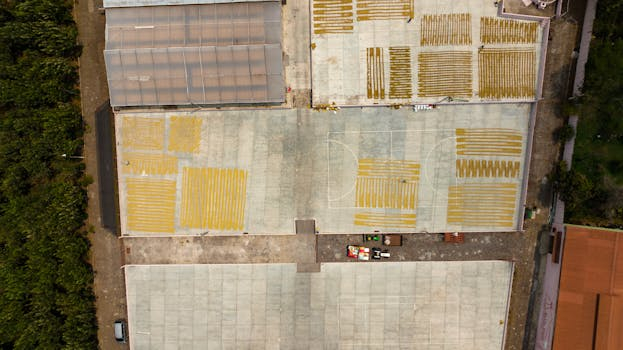Vertical Farming in Urban Areas: Sustainable Food Production
Urban areas are rapidly expanding, and with the increase in population comes the challenge of providing sustainable food sources. Traditional farming methods are not always feasible in cities due to limited land availability and environmental concerns. This is where vertical farming comes in, a revolutionary approach to agriculture that is gaining popularity in urban areas. By utilizing unused vertical space, this technique offers a solution to the growing demand for food while also promoting sustainability.
The Basics of Vertical Farming
Vertical farming is the practice of growing crops in stacked, vertical layers instead of on a single horizontal plane. These farms can be in the form of high-rise buildings, warehouses, or even shipping containers. In this system, natural sunlight is replaced with efficient LED lights, and soil is replaced with hydroponic or aeroponic systems. These controlled environments provide optimal conditions for plants to grow, regardless of the external climate.
Benefits of Vertical Farming
One of the main advantages of vertical farming is its potential to improve food security and reduce the distance between the source of food production and consumption. With these farms located in or near urban areas, the time and resources required to transport and distribute produce are significantly reduced. This not only helps to make fresher and healthier food more accessible to city dwellers but also reduces the carbon footprint of the food industry.
Furthermore, these farms use significantly less water compared to traditional farming methods. The water used in hydroponic and aeroponic systems is recycled, making this method much more water-efficient. This is especially important in urban areas, where water is scarce and traditional farming consumes a large portion of it.
Vertical farming also eliminates the need for pesticides and herbicides, making the produce safer and healthier for consumption. The controlled environment also helps to combat pests and diseases, reducing the risk of crop failure. This, in turn, leads to higher yields, making urban farming a more profitable venture.
Sustainability and Vertical Farming
One of the biggest challenges of traditional farming is its negative impact on the environment. From clearing land and depleting resources to using harmful chemicals, conventional agriculture methods contribute significantly to global warming. Vertical farming, on the other hand, offers a sustainable solution by reducing the environmental impact of food production.
These farms use significantly less land compared to traditional farming and can be built in areas previously deemed unsuitable for agriculture, such as abandoned buildings or industrial areas. This means that natural habitats are preserved, and the biodiversity of the land is not affected. Additionally, the use of LED lights and controlled environments means that the energy consumption of vertical farming is lower compared to traditional farming methods.
The Future of Urban Farming
Vertical farming is still a relatively new concept, but it has the potential to revolutionize the way we produce food in urban areas. With advancements in technology, this method is becoming more efficient and cost-effective, making it a viable option for sustainable food production in cities. This could lead to a significant reduction in the reliance on importing food from other regions, making cities more self-sufficient and resilient.
The benefits of vertical farming extend beyond just food production. It has the potential to provide employment opportunities in urban areas, promote community involvement, and increase access to fresh and healthy produce in food deserts. It also offers a solution for cities to combat the effects of climate change by reducing their carbon footprint and promoting sustainability.
The Bottom Line
Vertical farming in urban areas offers a promising solution to the challenges of traditional agriculture methods. With its numerous benefits, it has the potential to improve food security, sustainability, and the overall well-being of urban communities. As we continue to face the growing demand for food and the effects of climate change, vertical farming could very well be the key to making our cities more sustainable, healthy, and livable.










